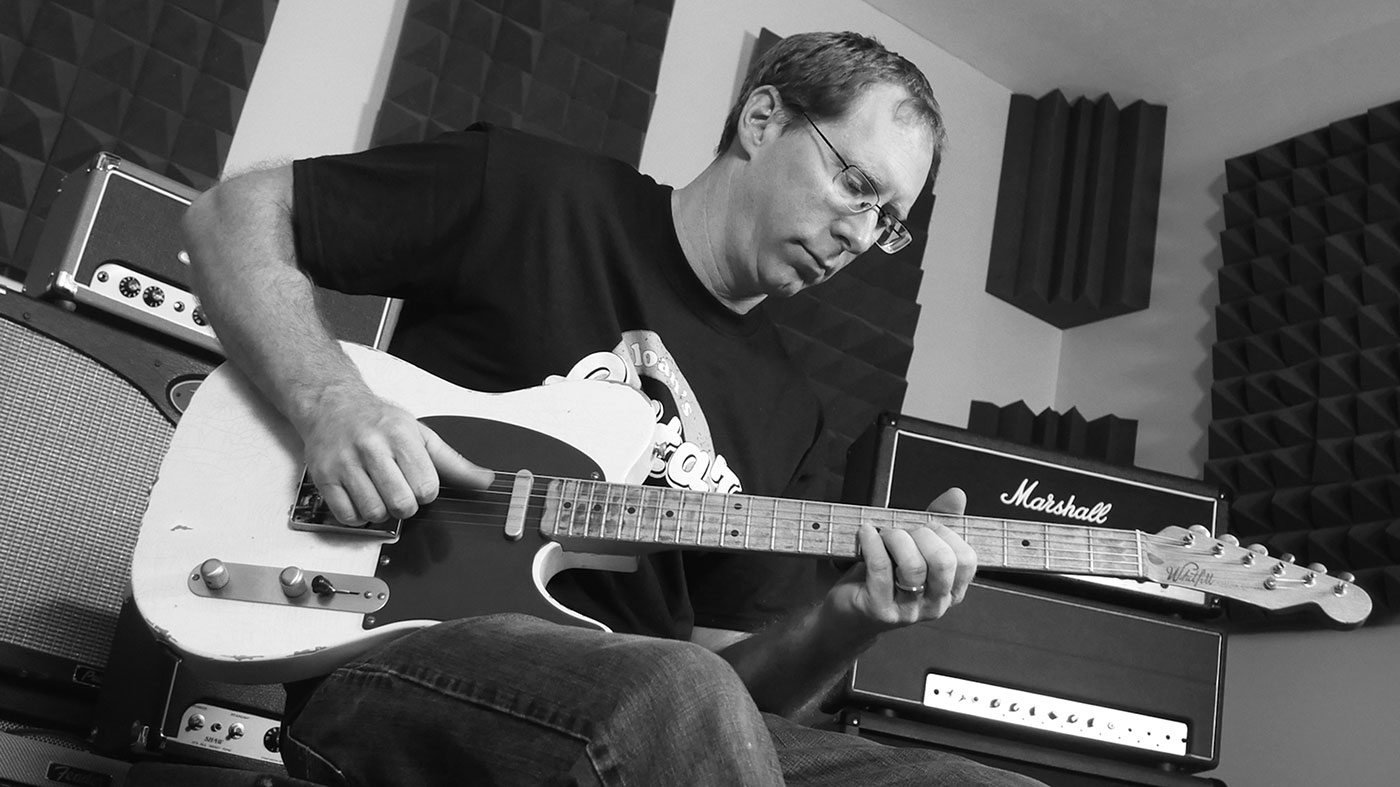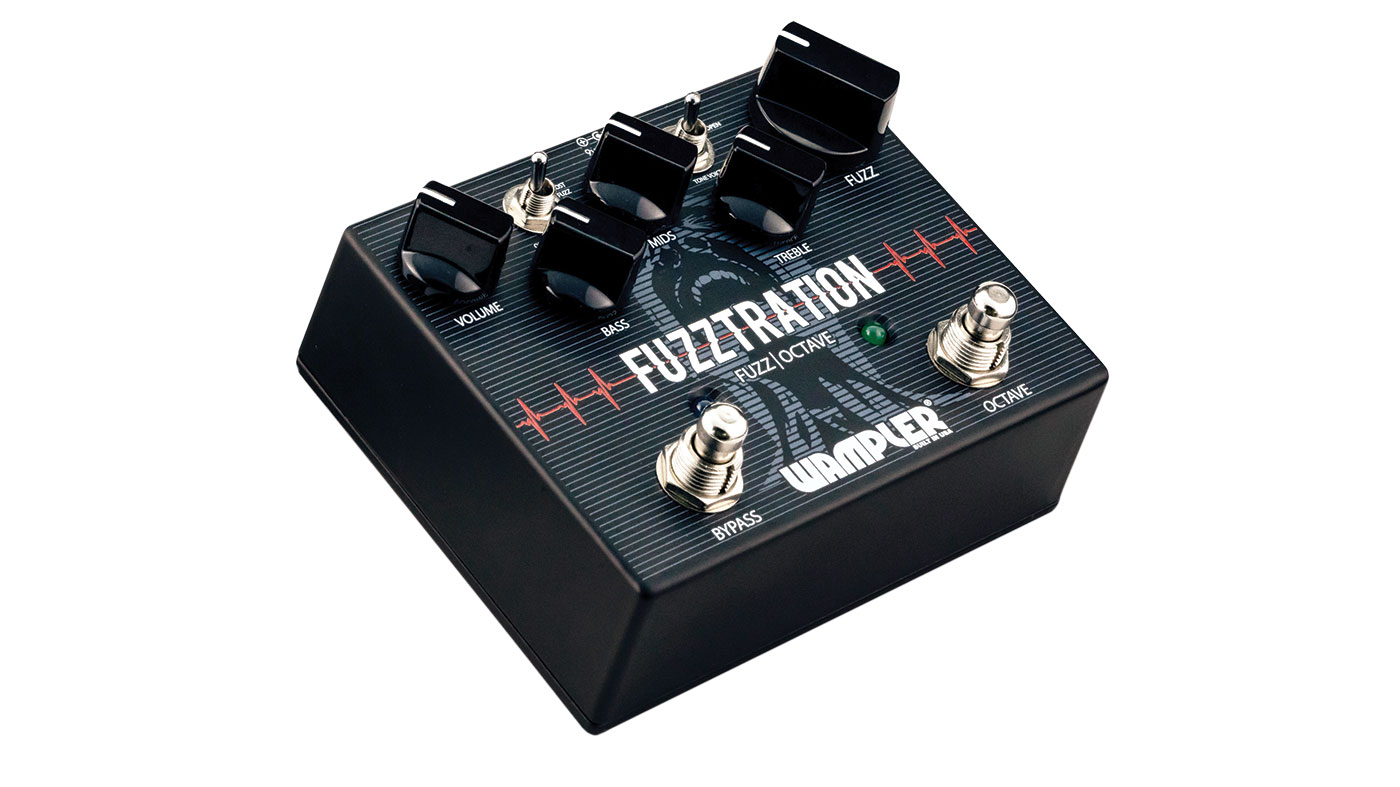
The brains behind Wampler Pedals takes us through his journey from early Noughties analogue mods to the dazzling future of DSP...
1. What was the first pedal that you built and how did the design come about?
“I started out modifying pedals, but the first pedal I built was back in 2002. It was a basic overdrive using Veroboard from one of those DIY websites. Gosh, that goes back some years… I’ve slept a few nights and had a few beers since then!
“Eventually, I bought a breadboard and learned my way around circuits from building them and experimenting. Originally, my company was called IndyGuitarist and the first pedal - which sold more than two or three units - was called the Blue Fuzz. Eventually, as the company started growing, I followed in Robert Keeley’s footsteps and branded it after my name, so we became Wampler Pedals.”
2. What do you think makes Wampler Pedals unique?
It was always in my mind that there were already people making great clones
“It’s changed over the years for us. What originally set us apart was that we weren’t doing things like Fuzz Face and Tube Screamer clones - it was all completely unique distortion and drive circuits. It was always in my mind that there were already people making great clones. I thought, ‘I could buy those if I want to, so I’ll just create my own thing that doesn’t exist yet.’
“Over the years, as people have begged and pleaded for us to do clones, we’ve done our spin on that. Our Tumnus, for example, is a Klon-style pedal. I like to be forthcoming and let people know if a product is based on the skeleton of something else.”
Get the MusicRadar Newsletter
Want all the hottest music and gear news, reviews, deals, features and more, direct to your inbox? Sign up here.
3. What’s your best-selling pedal and why do you think that is?
“It changes all the time, but right at this second it’s either the Pantheon or the Tumnus Deluxe. They feel good under the fingers, they sound good with a variety of amps, and they last a long time. You can run over it with a car and it’s probably not going to break! At least if something does happen to it, we’ll get it taken care of immediately without a lot of fuss.”
4. Which notable players/bands have used Wampler Pedals?
“If you go to our website, there’s a huge list of them [including Brad Paisley, Neal Schon, Dweezil Zappa and Oli Brown, among many others]! To be honest with you, I actually find it very satisfying when someone who’s saved up for three months to invest in their pedal takes the time to email me and give me their thoughts on it.”
5. Is there anything new on the horizon with Wampler Pedals?
“We’ve just released a pedal called the Fuzztration. It’s a fuzz combined with an independent Octavia-style octave circuit. The fuzz circuit has multiple options, including a three-band EQ, and it goes from a Big Muff-style fuzz to something much more gnarly and open.”

6. Could you tell us a secret that you’ve discovered about effects?
Traditionally, people put delays after their dirt pedals, but if you put a delay before, there are some pretty wild things you can do
“Traditionally, people put delays after their dirt pedals, but if you put a delay before, there are some pretty wild things you can do, depending on what style of overdrive or distortion you’re using. It really changes the flavour of the delay. It can make it sound ugly, but it can make for some really cool sounds as well.”
7. What’s your best tone tip?
“Always be in tune and get lots of practice - that’ll probably improve your sound more than anything else!”
8. Name a common mistake that guitarists make with effects...
“Running the wrong voltage into a pedal. I see that a lot. It’s an easy mistake, but sometimes when you put that 18-volt power supply into a nine-volt pedal you’ll get nothing out of it apart from smoke!”
9. What new pedal triggers your GAS most now?
“I love what Chase Bliss Audio and Meris are doing. I love the Kemper and Fractal technology and the impulse response stuff that’s happening these days. I’m really intrigued by a lot of the DSP-based stuff and I really like how things are going in that area.
“Those are areas that we’re working on for the future as well. It’s quite different from the analogue world, but to be honest with you, it’s probably more exciting to work with because you’re not as limited.”
10. What problems have effects designers yet to crack?
“There can still be issues with cost versus processing power. You might be able to do amazing things on the digital platform you’re using, but unable to take that chip and the circuitry around it into a pedal for a price that people are willing to pay. But it’s getting better, and we’re starting to see more companies coming out with cooler and cooler things because the price of that technology is coming down and making it more affordable.”
Guitarist is the longest established UK guitar magazine, offering gear reviews, artist interviews, techniques lessons and loads more, in print, on tablet and on smartphones Digital: http://bit.ly/GuitaristiOS If you love guitars, you'll love Guitarist. Find us in print, on Newsstand for iPad, iPhone and other digital readers
“A fully playable electro-mechanical synth voice that tracks the pitch of your playing in real time”: Gamechanger Audio unveils the Motor Pedal – a real synth pedal with a “multi-modal gas pedal”
“Instead of labouring over a perfect recreation, we decided to make an expanded counterpart”: Chase Bliss teams up with Mike Piera for Analog Man collab based on the legendary King Of Tone












